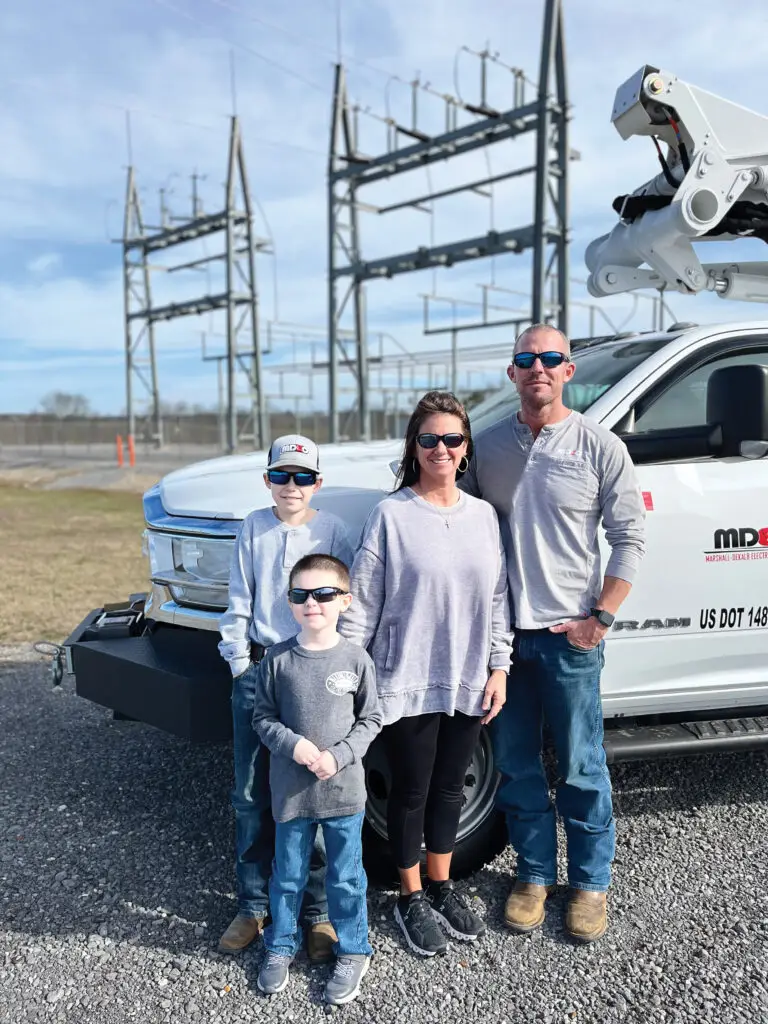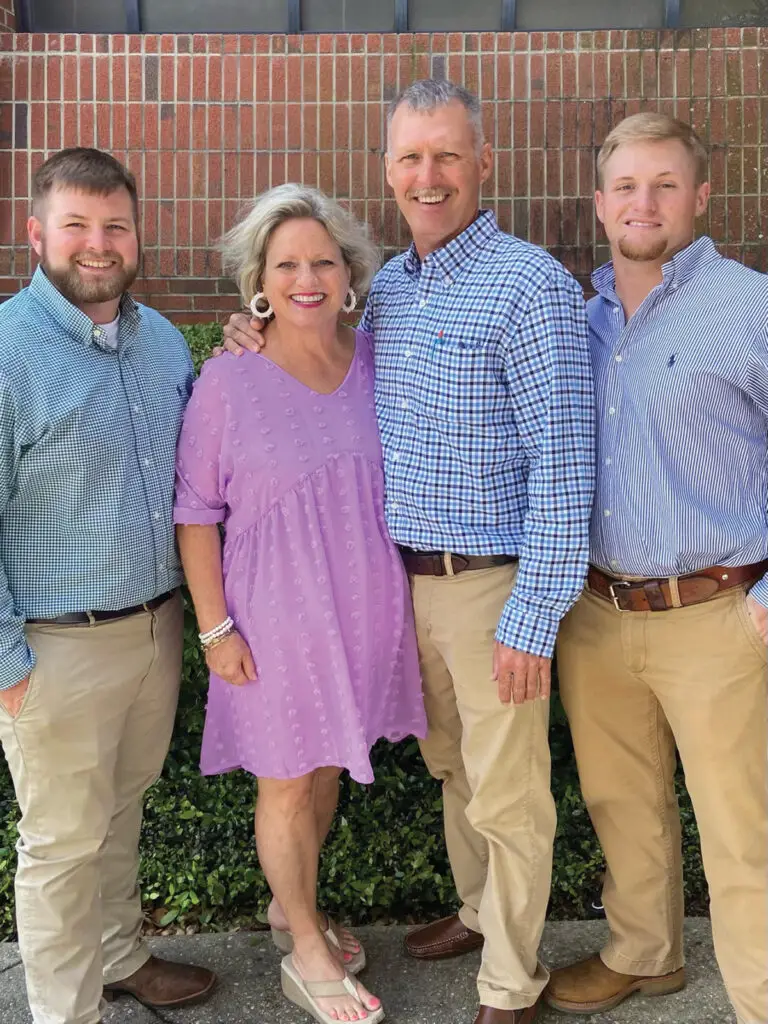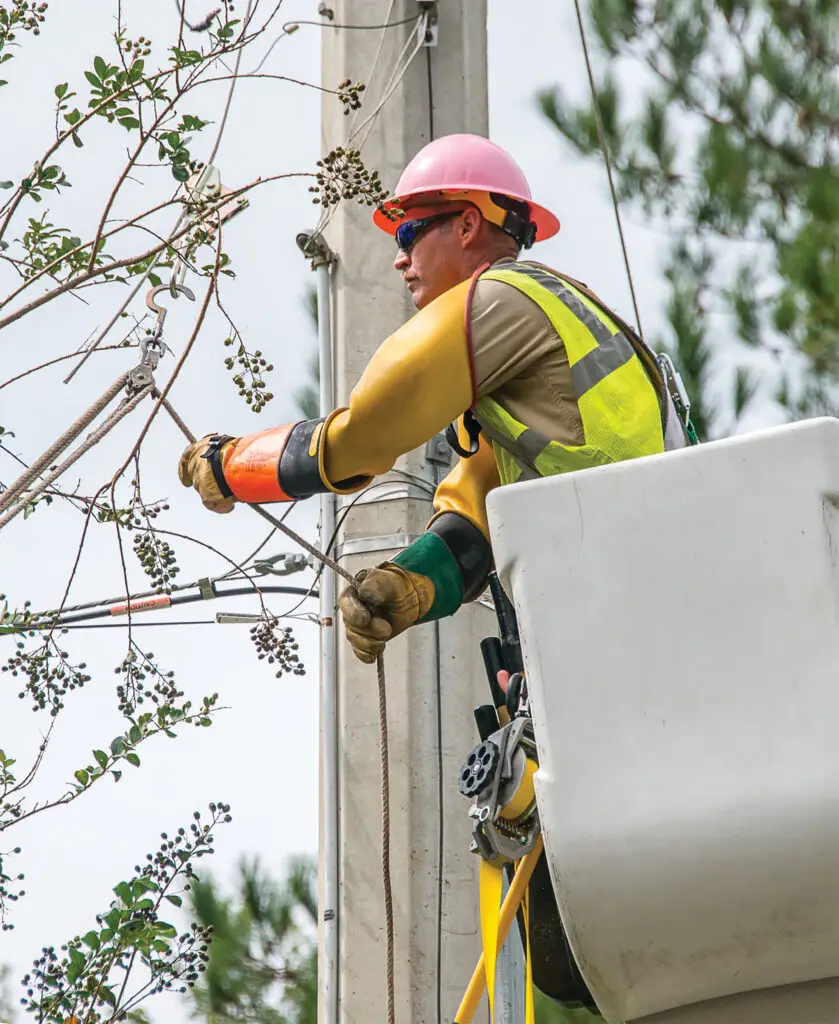When your electricity goes off, the first question most of us ask our electric cooperative is: “When will my lights come back on?” That’s something our linemen get asked quite often, so in recognition of Lineman Appreciation Week this month (April 15-19) we wanted to share with our readers the perspectives of two of our Alabama co-op linemen, in two different parts of the state. While they live hundreds of miles apart, these two linemen share very similar experiences, and both are dedicated to restoring your power quickly and safely.
By Jarred Whitaker, Marshall-DeKalb EC

I love to help people. That’s just what I do. It is all about seeing the expression on the face of someone who has been in the dark for several hours or days, when we can restore their power. I feel like I have done my job. Sometimes, you can’t see them, and you only hear cheers of happiness when you flip the switch. What job could top that?
Sometimes it takes longer than you expect, and our members get frustrated and voice their concerns. They just don’t understand the process of what it takes to get the power back on. So let me take you through the process of what we do at Marshall-DeKalb EC during power outages, and hopefully, I can shed some light.
The Outage Begins
6 p.m.: The lineman on call receives the first report of an outage. Every week, MDEC has three men on standby 24/7. On weeknights, weekends, and holidays, someone is always there. During normal working hours, calls are received through the office, but after hours, calls are received through our answering service. When you report an outage, they relay to the lineman your location number, address, and any other important information you tell them. From here, our linemen leave as quickly as they can. The MDEC system covers Geraldine to Douglas, Guntersville to Boaz, and Dawson to Nixon Chapel. Travel time does factor into response time, and often, a lineman may be on another call when your lights go out. But know that someone is trying to respond ASAP when your lights are out.
Arrival and inspection
7 p.m.: We spend a lot of training in visual inspection. From the time the first call is placed until “arrival,” more outages may have been reported, especially if the whole line is out. If emergency crews are present or a customer has seen something helpful to us, that will help the situation normally. But if you see us drive by your house several times, I promise we are not joyriding but checking for multiple things. The first time may be to see if you’re the only one who is out or if the line is out. You would be surprised at how often a whole line, road, or neighborhood is out, but only one customer has called. So we drive to the source to see if the “device” is open or closed. If it’s open, then we must determine what caused the outage. Sometimes this is the most time-consuming step. But we cannot, and I stress, cannot energize a line until we are 100% sure the public is safe. If it is dark outside or if it’s stormy, this just adds time. When you see us drive by, we are looking for what caused the outage. Examples can be downed trees, tree limbs, and lightning; most common in our area are squirrels and/or car wrecks. Also, MDEC is an electric cooperative. We are trying to move more lines closer to the road, but we have a lot of lines that go across pastures, across fields, and through the woods. So, terrain matters. We often must set out on foot to walk our lines to inspect inaccessible areas.
Outage case located
8 p.m.: Safety comes first! Sometimes outages are easy. A squirrel may have blown the fuse on a transformer, affecting only one customer. Those outages are easy and can be fixed quickly. But what happens if a tree falls across the main line, tearing down the line? At MDEC and all electric companies, we have safety steps that must be followed. These steps are vital to us. Although I love our members and want your lights back on ASAP, I’ve got a wife and two sons at home who depend on me and expect me to return home safely. The same goes for my co-workers. Our safety procedures allow us to work safely in a dangerous job and protect the public. We’re all in this together! So, we find the source and check for the cause. The switch or device is open, the tree is on the line, or the line is down, so we ground both sides of where we’re working to protect from back feed and the unknowns. Then, we hold a job briefing or tailgate discussion with all workers present so everyone knows what to do, what has been done, knows when to do it, and answer any questions or concerns.

Work begins
8:30 p.m.: All safety procedures are in place, and work begins. If a tree is down, we would remove the tree. Those who use chainsaws know this is dangerous, especially if the tree is on the line and is under pressure. If the wire is completely broken, then we will put the line back up. If the line is a three-phase, we may have a broken cross-arm. No matter the case or what has been broken, the repairs will be made. Earlier, we talked about lines in rural areas or through the woods. These lines may not be accessible with trucks. If so, the lineman must climb the pole to make repairs. This, too, can add time. Repairs have been made, grounds are removed, and now we are ready to re-energize the line.
9:30 p.m.: When you see us drive by this time, it’s good news. We’re heading back to the source to close the switch or device. Once everyone is in the clear, we re-energize the line, and your lights are back on.
Power restored
10 p.m.: Please keep in mind this is only one scenario. Not every outage is the same. A broken pole or car wreck will take more time. We are improving daily. Technology is so advanced, and we constantly try to stay on top. From our metering system to our new mapping system, time frames are much shorter than they used to be. We, as linemen, just ask you to be patient and understand there is a method to what we do to keep everyone safe. Those of us who are on call have missed birthdays, family gatherings, Thanksgiving dinners, and even Christmas mornings to keep the lights on. But that’s what we do. We’re a part of this community. We’re neighbors, friends, we’re family. We take great pride in keeping the electricity on. For doing whatever it takes, however long it takes, no matter when, 24 hours a day- 7 days a week- 365 days a year, you can always count on MDEC!
By Jeff Malone, Baldwin EMC
Like my fellow linemen, I like to help people and love being a lineman. It truly is a great feeling to be able to restore comfort, convenience and security as you restore power.
Jarred’s step-by-step account helps you see what we see. I am going to try to help you understand what we are thinking and feeling as we restore power.
The Outage Begins: Focus on solving the problem

These days, a 6 p.m. outage doesn’t cause me too much stress. I’ve been a lineman for… well, let’s see… I started when I was 20, and I’m 53 now. So, 33 years. Back when my children were younger and I had more family commitments, it was tougher on us. It’s tough on guys with young families now. Because a 6 p.m. call could come in the middle of an important dinner or in the middle of your kid’s big game. And in 33 years, I’ve missed quite a few. That’s our job, though. We can’t focus on what we are leaving when we get that call. We must focus on safety and solving the problem. We learn a lot from the outage details provided on that call. We are thinking about the number of meters affected by the outage, the vicinity of the outage and cross-referencing the additional information shared. Even before we arrive, we are imagining our system, the circuits in the area and establishing possible causes and a plan. We are preparing both physically and mentally for what we are going to encounter. Unfortunately, the cause is sometimes worse than the outage. Car accidents, house fires and man-made outages are the worst possible scenarios.
Arrival and inspection
When we arrive, there are a lot of things running through our heads as we are doing our visual inspection. Depending on the amount of damage or the location of the outage, we are determining if additional crews are needed to help restore power safely and efficiently. We don’t want the outage to linger, but we also don’t want to pull more crews away from their families and plans if we can get the job done. We are also determining if we can isolate the outage and do some switching, which is ultimately just redirecting the power around the outage to get some meters restored before the damage is repaired. Once the damage is located, we are thinking about every safety measure needed to protect us and you. No two outages are the same, so we must think clearly through every step. We are also thinking about what hazards exist besides what caused the power outage. These days, traffic is a major concern, and distracted driving is never far from our thoughts. We are thinking about how to set up our work zone to protect us, our equipment and the public from danger.
Outage case located: Safety at the forefront
Once the outage is located and before repairs begin, we will perform a tailgate discussion to identify hazards, ensure everyone is on the same page, and ensure that each part of our plan is clear. Once it is established who is doing what, we put on our PPE (personal protective equipment), test for voltage and apply personal grounds. We also apply insulating materials as another measure of safety. Years ago, linemen would disconnect power before they started to make repairs, and in some cases, that is still required; however, a lot of times we work on energized lines to prevent further inconvenience to additional members. This is just one of the reasons our job is classified as one of the most dangerous. We are really thinking about how we can have the least amount of inconvenience for you as we make necessary repairs while keeping safety at the forefront of our minds.

Work begins
It is finally time to start working to repair the outage. We have the necessary training, tools and team members. Years of specialized training and an uncompromising commitment to communication are paramount as we start making repairs. We had a speaker tell us one time that we must “be where our feet are,” and that is so true. You can’t daydream when you’re literally handling 7,200 volts of electricity. Every step must be calculated until every repair is made. Even the act of bringing power back on after the repairs are made requires communication. We realize there are no short cuts, no apologies and no excuses because electricity doesn’t give you a second chance to get it right. That’s always on our mind during this phase.
Power restored: Thankful on many fronts
Now, gratitude is what we are feeling. Even after 33 years, getting power restored still feels great! We are thankful that the power is back on for you, and we are thankful we are on our way home. If this had been a middle-of-the-night outage, we would be thankful for the few hours of sleep we would get before we report to work the next morning. We are thankful for the job worked safely and being able to return to the people who love and care about us. We are thankful for the way we have learned to quietly enter our homes after a late-night return and not even disturb those who are sleeping. We are thankful for the calling on our lives, the ability to be linemen and the company we work for that provides power to our communities. Lastly, we are thankful for you. We are thankful for your patience and how you, as a member, make this job so personal.




